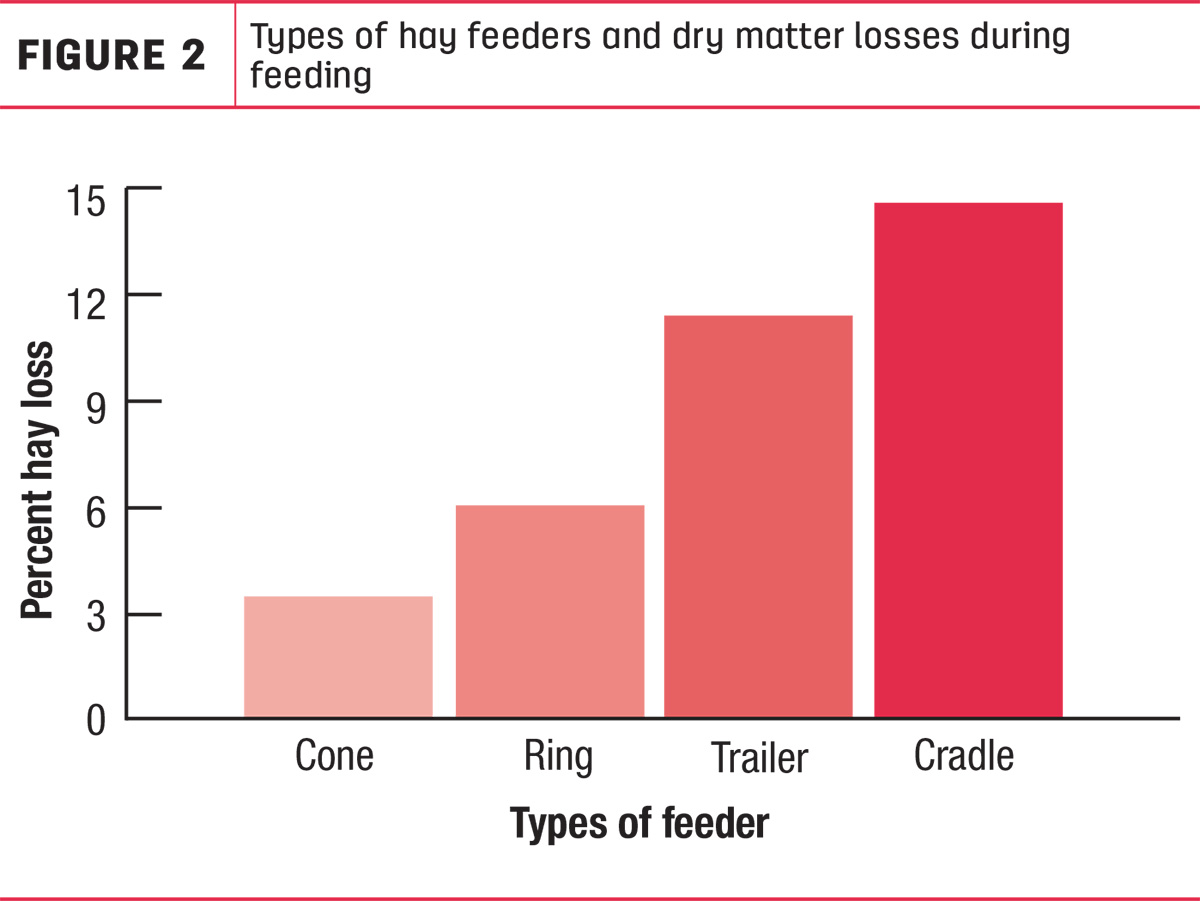- Cover bales whenever possible. Keep in mind, plastic tarps or sheeting can trap moisture next to the bales. Additionally, tarps can be difficult to secure in windier areas. This solution might also be inefficient in terms of cost. Still, the lower rate of dry matter loss might make covers a wise investment.
- Use tires or other means of elevation to keep hay off the
ground. Hay-to-ground contact is the biggest factor in dry matter loss.
In some cases, 50% of overall loss happens in the vicinity of
hay-to-soil contact.
- Orient stacks north to south to prolong storage life. This provides maximum sun exposure for better moisture control.
Crunching the numbers, livestock producers can see the financial impact of storage loss. For example, a 1,000-pound bermuda bale stored outside, uncovered on the ground could see a 30% dry matter loss. This is 300 pounds. Assuming hay analysis came back as 10% protein and 58% total digestible nutrients (TDN), losses for this single bale amount to 30 pounds of protein and 174 pounds of TDN. The producer replaces these lost nutrients and dry matter with supplements and purchasing additional hay. Not only is the producer losing their own hay, but they are also having to pay more to feed.
Reducing loss during feeding
As with storage, dry matter losses during feeding can be costly. Minimizing hay handling helps reduce losses and save money. Feed only one day’s worth of hay at a time or set up several feeding stations to extend feeding periods without creating competition between animals. Additionally, the type of feeder used plays a role in dry matter losses. A feeding system that keeps hay off the ground helps reduce waste since livestock are less likely to use it as bedding. Cone feeders have been shown to have the least amount of waste, while cradle feeders have the greatest (Figure 2).

Preserving hay quality, preserve your bottom line
Having the highest-quality, most nutritious hay on hand during the long winter months is important. Making smart choices during baling, storage and feeding helps preserve forage quality and quantity. This, in turn, reduces expenditures for a better bottom line.
Jessica Williamson is a livestock and forage manager for AGCO.






